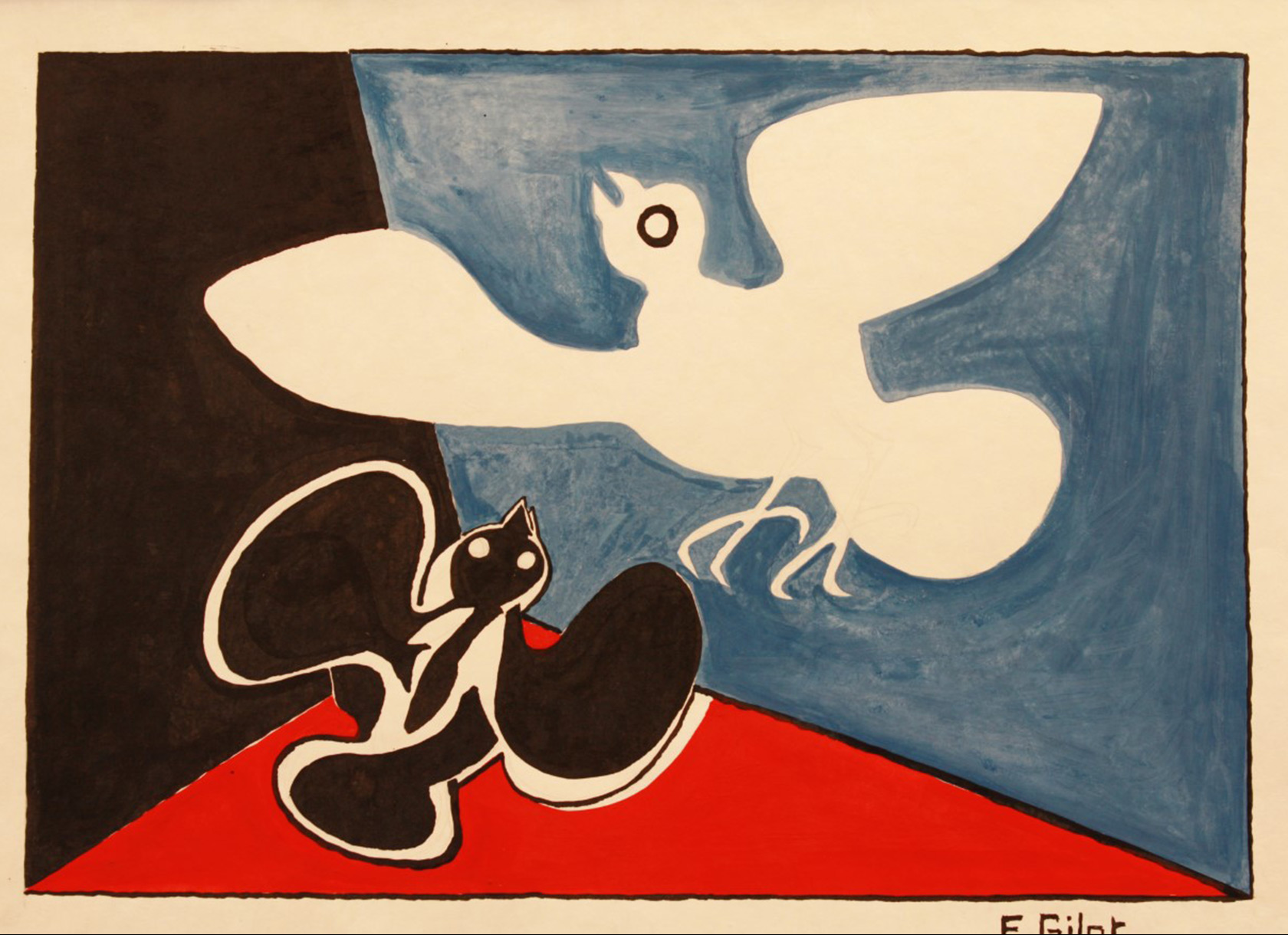
Artist Françoise Gilot has quite possibly seen it all. She was kept as a teenage hostage under city arrest during the Nazi occupation of Paris, studied dance with a protégée of Isadora Duncan, and took morning walks with Gertrude Stein—all before the age of 25. Now, on November 26 of another turbulent year, Gilot will celebrate her 99th birthday.
Although many stories about her long life focus on her relationships with famous men—most notably Pablo Picasso and Jonas Salk—Gilot’s an accomplished painter, designer, and engraver in her own right. Two of her pieces are part of the Ruth Chandler Williamson Gallery collection: the oil painting Soleil Couchant à Delos (c. 1966) and the watercolor Spring Birds (unknown).
Gilot was born in Neuilly-sur-Seine, France, in 1921 and was educated at the Sorbonne and Cambridge University, where she received degrees in philosophy and English literature, respectively. Although Gilot trained to be a lawyer, art was her passion, and she had her first exhibition of paintings in Paris in 1943, when she was 21. That same year, she began a decade-long relationship with Picasso, who attempted to sabotage her career. Their relationship ended when she left him, the only one of his serious companions ever to do so. Gilot later wrote a best-selling memoir about this period, Life with Picasso, which NPR hailed as “a revealing precursor to the literature of #MeToo.”
“He always saw me from without, not within,” Gilot told the New York Times in 1996. “When I left him, it was because I knew him but he still did not know me, and I thought, ‘After 10 years, that’s a bit much.’”
Gilot’s teen years were influenced by World War II; some of her early paintings were lost during the German invasion. After the war, she began to explore figurative painting, etching, and costume design, and soon signed contracts with galleries in Paris, London, and New York City. Since then, she has lectured and exhibited her work throughout Europe and United States. In 1978, she was honored with membership in France’s Ordre des Arts et des Lettres, which honors significant contributions to arts and literature, and in 2009 was awarded the rank of Officier de la Legion d’Honneur, the highest order of merit for French civilians.
Although Gilot’s art is often associated with that of other modernist, Fauvist, and Cubist painters from the post-World War II era—such as Marc Chagall, Henri Matisse, and, yes, Picasso—she’s continued to create and exhibit work well into her tenth decade. Her paintings are vibrant and colorful, combining realism with abstract sensibilities, and despite all the upheaval and career setbacks over the years, Gilot has always remained focused on her art. “It’s a bad idea that women have to concede,” she told the Guardian in 2016. “Why should they? That wasn’t for me.”

